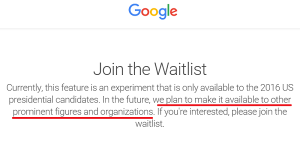Should you call a pullover a “sweater” or a “jumper?” It depends on your strategy. Just make sure you’re speaking the same language as your potential customers, advises columnist Rachel Lindteigen.
 Over the past few years, I’ve observed an interesting trend, and it’s troublesome to me. I wonder if companies even realize they’re doing it. The company is creating content and optimizing it, but for some reason, it’s not working. They’re not getting the traffic or conversions they hoped for, and many times, they’re not sure why.
Over the past few years, I’ve observed an interesting trend, and it’s troublesome to me. I wonder if companies even realize they’re doing it. The company is creating content and optimizing it, but for some reason, it’s not working. They’re not getting the traffic or conversions they hoped for, and many times, they’re not sure why.
As we sit to discuss the situation, they’ll often say, “We’ve done everything we’re supposed to do. We created content. We optimized it. Why isn’t the customer buying?” Maybe they’re not quite that direct, but that’s what they’re trying to figure out.
Many times, it’s painfully obvious to me why something isn’t working, but it’s hard to explain to a client for fear of offending or alienating them. When you’ve created content, optimized it and followed best practices, and it’s still not working, you have to figure out what’s wrong.
In many instances, it feels as if the client and their customers aren’t even speaking the same language.
Right now, you’re probably questioning that last statement. “What is she talking about? We’re both speaking English. Do you mean I need to translate everything? What?”
No, that’s not what I mean, unless you literally are targeting clients who speak a different language.
Brand Terms Vs. Consumer Terms
What I see is more basic than that. It’s when brands are tied to their brand terms, rather than being willing to use consumer terms.
I worked with a UK-based retailer that was trying to compete in the American market but struggled to determine if they should go with US or UK English terms. I told them the way I saw it, they had to determine if they wanted to be a US retailer or a UK retailer selling in the US.
If they really wanted to compete in the US and rank for non-brand, broad keywords with higher search volume, they needed to use the terms in their product names, descriptions and on-page content. If they wanted to sell pants, they needed to sell “pants,” not “trousers.” If they wanted to sell sweaters in the US, then they should offer “sweaters,” not “jumpers.”
The list went on and on. Are you familiar with plimsolls or brogues, or do you buy sneakers and oxfords?
I always tell clients that there really is no right or wrong answer here; it’s dependent upon your brand and what’s important to you.
Decide What’s Important To You
I’ve had some clients decide to change their terminology, while others have stayed true to their roots. Either answer is OK.
What’s not OK is sticking to your roots and then expecting your customers to adapt instead. If you want to focus on terms that are brand-specific and not the mainstream, you need to accept that you will have less traffic potential.
I have a client that’s a very high-end designer brand, and they’re aware that they limit themselves. However, they are OK with it.
They know that someone who’s searching for a black dress probably isn’t going to buy a designer dress for hundreds of dollars. However, by going for the longer-tail black-lace designer dress, ideally, they’re going to connect with a customer base that is targeted to them. Yes, the market share is smaller, but those who are searching are more likely their customers.
Sometimes brands have very strong reasons for their preference for one term or another; other times it’s due to the desire of someone at the top, and that can be very limiting and challenging for the marketing team.
One client I worked with was not allowed to use the word “kid” because someone very high up didn’t like it; he or she preferred children. Consumers prefer the word “kid” more than 2:1 (110,000 vs. 40,500 average monthly searches).
These type of situations can be challenging for the agency, brand and customers. The brand manager is charged with increasing traffic, orders and revenue by a certain percentage year over year but isn’t allowed to use the word their customers use to search.
But the competition can, and does, and the customers find their page in the search results and buy from them instead. It’s a vicious cycle.
Speak The Same Language As Your Customers
So what’s the point of all this? As marketers, we need to ensure we’re speaking the same language as our customers. If we’re choosing a specific form of that language, there may be fewer customers to speak to, and that’s OK.
When we make these decisions, though, we have to remember that there are fewer potential customers to reach. If you want to sell a sweater but you call it a jumper and have it in a knitwear category, you’re probably going to sell fewer sweaters than if you just called them sweaters to start with.
As long as you understand that and make an informed decision, it’s OK to speak a different language from your customer’s. However, if you want to grow and reach a new audience, you need to adapt to them.
Are you a UK retailer selling in the US, or do you want to become a US retailer? That’s really the bottom line in this type of situation.
While the example is US versus UK, this obviously applies to any branding choice. It’s OK to opt for either strategy, as long as your goals make sense for the chosen strategy and potential audience.
Some opinions expressed in this article may be those of a guest author and not necessarily Marketing Land. Staff authors are listed here.
(Some images used under license from Shutterstock.com.)
Marketing Land – Internet Marketing News, Strategies & Tips
(93)







